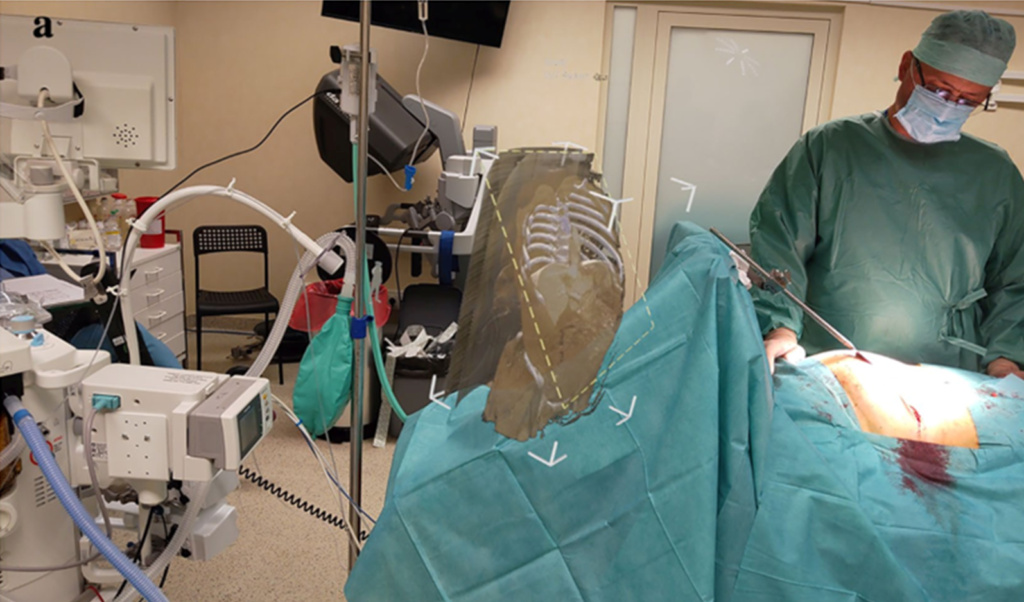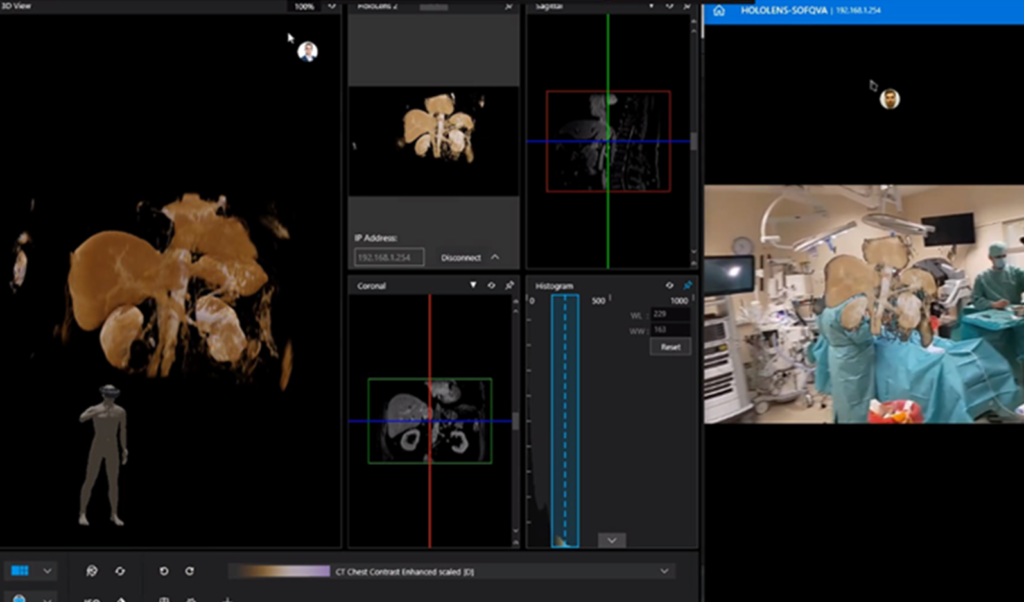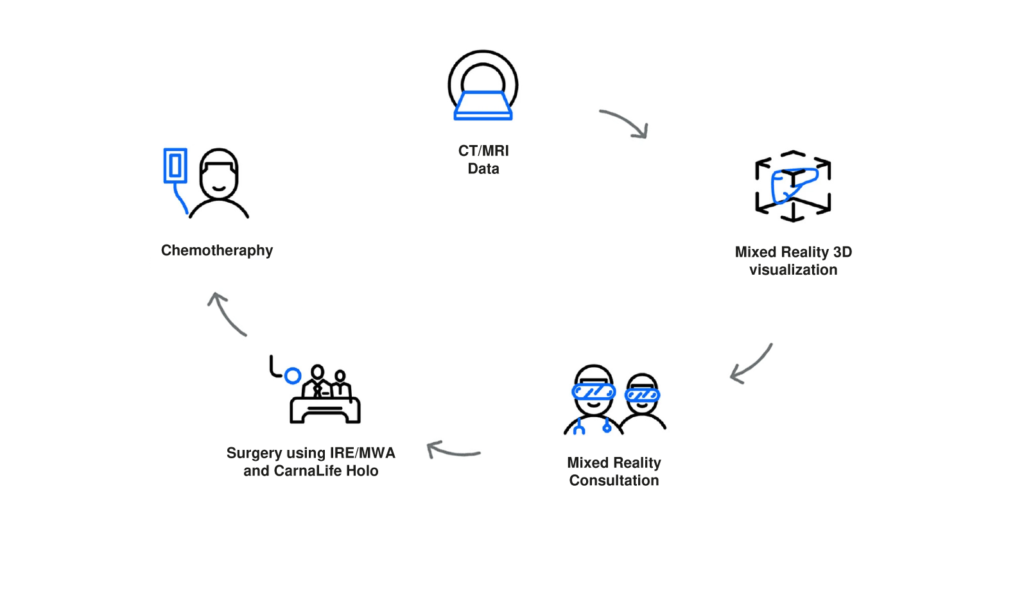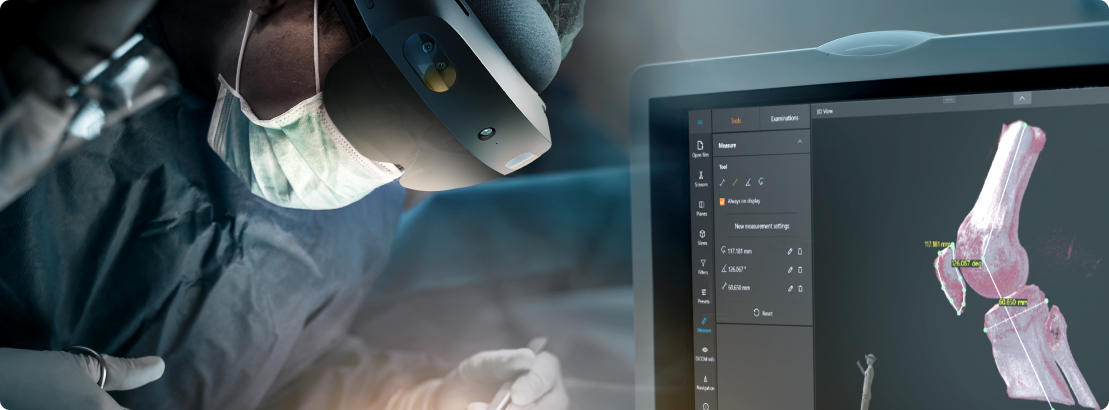Three-dimensional mixed reality visualization of medical image data as a tool used at Neo Hospital to support innovative surgery of advanced gastrointestinal cancers.
The doctors from Krakow’s Hospital in Kliny (Neo Hospital Group) perform liver and pancreatic cancer surgeries using innovative technologies such as irreversible electroporation(IRE) and microwave ablation (MWA). Dr n. med. Ryszard Wierzbicki is the leader of a multidisciplinary team that is responsible for introducing these breakthrough therapeutic methods.Doctor Wierzbicki is a specialist in the treatment of primary and metastatic tumors of the liver and pancreas and, owing to CarnaLife Holo, also cancerous lesions that have been deemed unresectable with classical surgical methods.
CarnaLife Holo is the analytics module of the CarnaLife telemedicine system, certified as a Class IIb diagnostic support medical device.
Most tumors are currently diagnosed with the use of CT, MRI, or ultrasound scans. Surgeryis the preferred treatment method in most cases of solid tumors and is essential for prognosis.However, there is a group of solid tumor patients who are disqualified from surgery because their tumor is considered unresectable based on classical imaging methods. The use of three-dimensional technology allows physicians to accurately determine the dimensions of a cancerous lesion and its topography. It also gives a realistic and complete insight into the nature of the pathology. Looking at a flat two-dimensionalimage may not be enough to make the right decision whether a case is fit for surgical treatment.With the precision of three-dimensional imaging, surgical oncologists are able to select an optimalextent of the procedure and determine if it is beneficial for the patient.
CarnaLife Holo is a software that enables holographic three-dimensional visualization of DICOM data and was specifically designed to be used for mixed reality with HoloLens 2 goggles (by Microsoft). The system can work directly with the hospital’s PACS (Patient Archiving and 2Communication System), enabling immediatedownload of image data in the preoperative environment and in the operating room.
Its primary purpose is to provide diagnostic images that support decisions concerning qualification for surgical treatment, the process of surgical planning, as well as making decisions during the procedure. CarnaLife Holo gives its user better spatial awareness, allowing them to interact with the holograms created from image data, using voice commands and hand gestures without breaking the sterility of the surgical field.
“The method of irreversible electroporation is not designed for surgical treatment of all parenchymalcancers,” says dr n.med. Ryszard Wierzbicki.“In practice, it is used when a tumor cannot be removed, for example because of numerous metastatic lesions or because of the location of a tumor in a place that is difficult to access, e.g. near large blood vessels, the damage to which may threaten the patient’s life. This form of treatment of choice is most often used in very difficult liver and pancreatic cancers, and the procedure is mainly aimed at reducing the tumor mass so that it is more amenable to complementarytreatments such as chemotherapy,” the doctoradds. “These are palliative procedures, i.e. procedures which are not intended to cure a patient completely, but to reduce pain and prolong life of patients suffering from so-called “incurable” cancers. Systemic treatment followingthe procedure is an essential element of the treatment plan, and the possibility of its rapid initiation significantly increases a patient’s chancesof achieving a beneficial treatment effect,” says doctor Ryszard Wierzbicki.
The effects of work of the multidisciplinary team, led by doctor Wierzbicki, received a prestigious “Złoty Skalpel 2021” award in a competition organized by the editorial office of Puls Medycyny and were presented at the 5th Congress of Polish Oncology, the 24th Congress of the Polish Society of Clinical Oncology as well as published: Wierzbicki, Ryszard, et al. “Three-dimensional mixed-reality visualization of medical image data as a supporting tool for innovative, minimally invasive surgery for gastrointestinal tumors and systemic treatment as a new path in personalized treatment of advanced cancer diseases.” Journal of Cancer Research and Clinical Oncology (2021): 1-7.
Link to the full article: https://link.springer.com/content/pdf/10.1007/s00432-021-03680-w.pdf
Source of the pictures: https://link.springer.com/article/10.1007/s00432-021-03680-w.pdf









